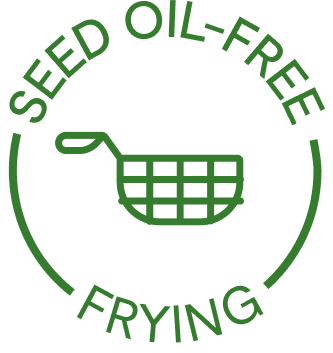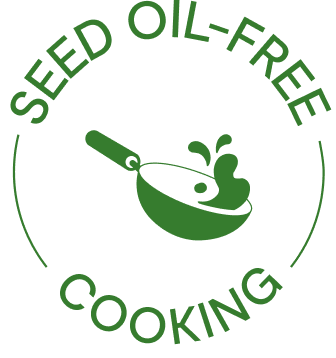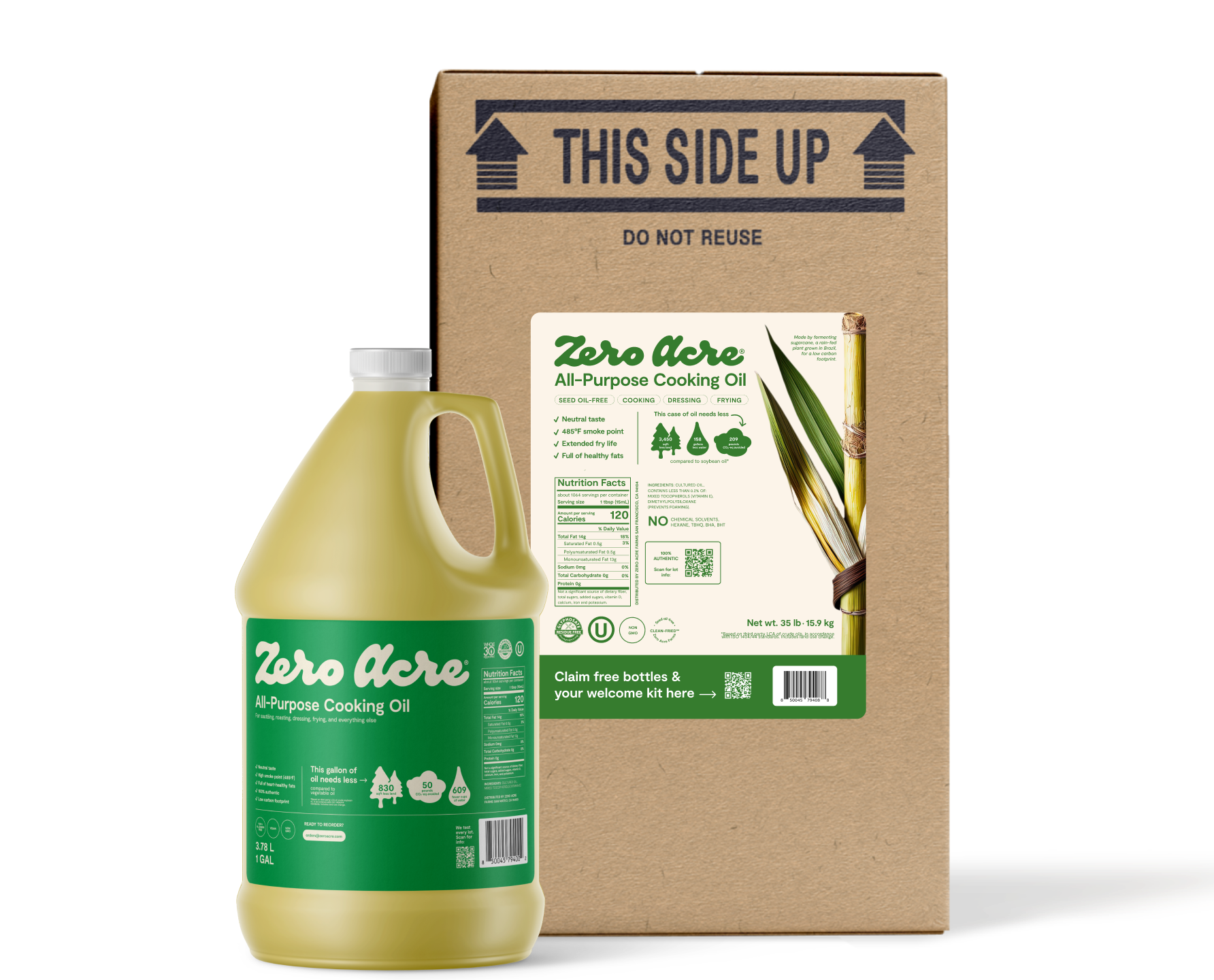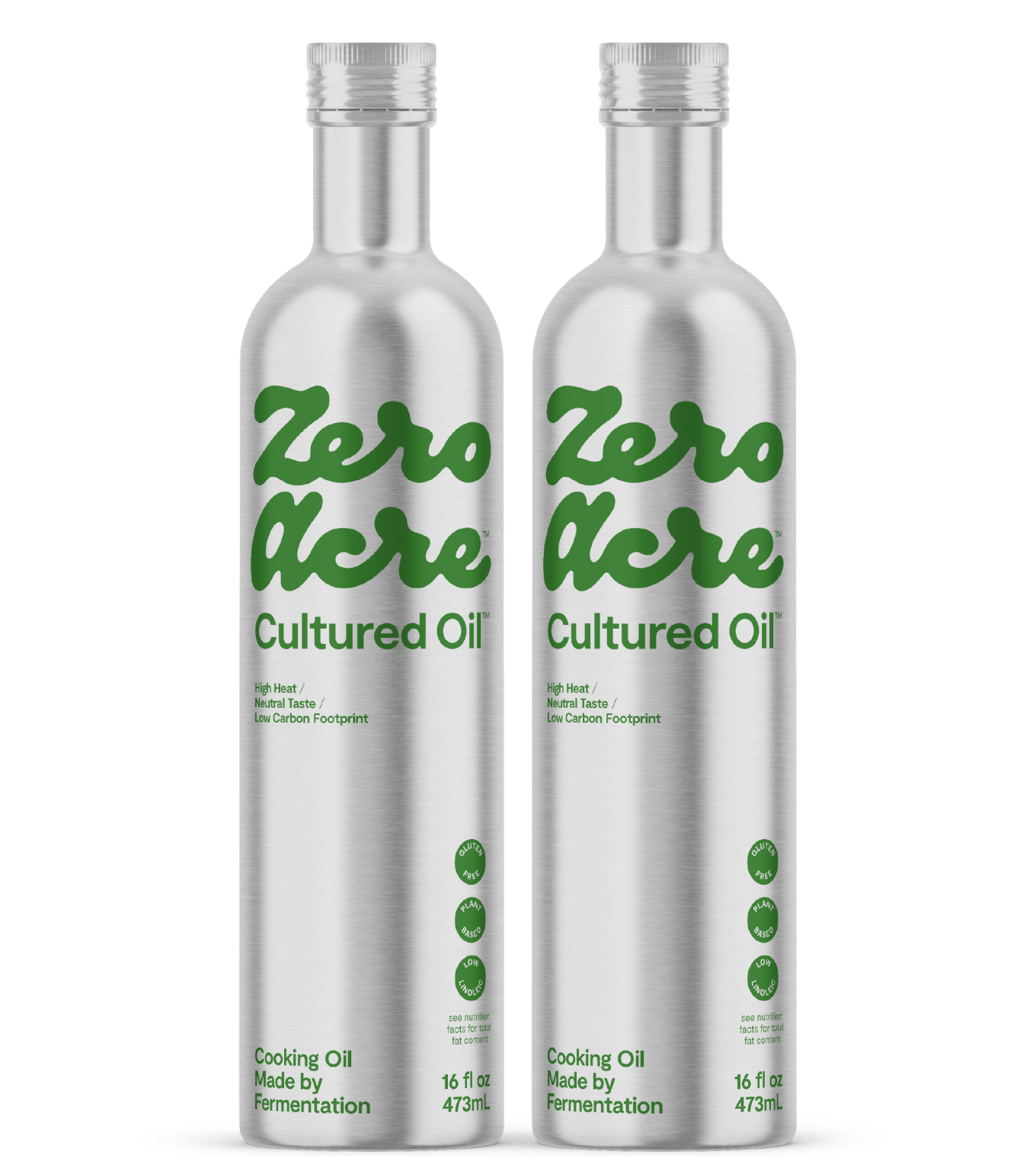WRITTEN BY: Emily Ziedman, MS
Article at a Glance
Vegetable oils are in nearly everything, from packaged snacks and fast food to 5-star restaurants and baby formula.
Global production of vegetable oils has increased over 1600% since the early 1900s, has doubled in the last 20 years, and is expected to grow 30% in the next four years.
The increase in seed oil consumption likely has something to do with a surge of research published in the 1950s that unveiled the supposed connection between saturated fat and heart disease.
As the consumption of seed oils has steadily increased throughout the world, so has the incidence of several chronic diseases, including cardiovascular disease, diabetes, autoimmune disease, macular degeneration, and neurological disease.
Introduction
If you look at most ingredient lists on your favorite packaged foods, you'll likely see at least one type of vegetable oil. From chips to popcorn to granola bars, vegetable oils are everywhere, and overall consumption has increased dramatically over the last 100 years.
In fact, global production of vegetable oils has increased over 1600% since the early 1900s, has doubled in the last 20 years, and is expected to grow 30% in the next four years [*,*,*]. In the U.S., the consumption of soybean oil alone has grown 1,000-fold since 1909 [*].

And with this increase in vegetable oil consumption, chronic diseases like obesity, heart disease, cancer, and diabetes are also on the rise.
Today, at least 60% of American adults suffer from chronic illness — a 700% increase since the first survey on the topic in 1935 [*]. Before modern diets and lifestyles, chronic diseases were rare. Could the rise in industrial seed oil consumption have anything to do with it?
In this article, we’ll define what seed oils are, how they’re made, what they do in your body, and why avoiding them is crucial for cellular health.
What is Seed Oil?
Seed oils, often called industrial seed oils, are a type or subset of vegetable oils that are derived from seeds and are typically higher in linoleic acid, and therefore, may be worse for your health.
These oils are almost always derived from the seeds of crops and include:
Corn
Canola
Cottonseed
Soy
Sunflower
Safflower
Grapeseed
Rice bran
Peanut
Vegetable oils, on the other hand, are all oils or fats derived from plant matter, whether it’s from fruits, grains, seeds, or nuts. In other words, vegetable oils are a broad category that includes all plant-based oils. Some of the most popular “vegetable” oils include:
Canola (rapeseed)
Coconut
Corn
Cottonseed
Olive
Palm
Palm kernel
Peanut
Safflower
Soybean
Sunflower
Grapeseed
Rice Bran
Avocado
All of these vegetable oils have different arrays of fatty acid ratios, varying widely in their linoleic acid content.
A Quick History of Seed Oils
While fat has always been a part of the human diet, seed oils were only introduced to the food supply in significant quantities about 100 years ago. First, in the form of shortening (Crisco), and soon after as the myriad of cooking oils we know today, from soybean oil, corn oil, and canola oil, to safflower oil, sunflower oil, and more.
Not surprisingly, it took the American public a few decades to trade in traditional fats for seed oils, but over time (with the help of plenty of creative, health-oriented, and sometimes patriotic marketing campaigns), these new oils won their way into the hearts and homes of people across the United States [*].


What catapulted the popularity of seed oils, however, was a new surge of research published in the 1950s that unveiled the connection between saturated fat and heart disease. Traditional forms of dietary fat like butter and lard are rich in saturated fat, while seed oils are primarily made up of polyunsaturated fats.
In an attempt to protect their hearts, Westerners moved away from butter and lard and filled their cupboards with seed oils.
But, in the decades that followed, the research that initially bridged the connection between saturated fat and heart disease was put into question. We now know that seed oils, while low in saturated fat, are higher in certain types of unstable polyunsaturated fats and may have a much stronger correlation to heart disease and other chronic illnesses, from diabetes and autoimmune diseases to cancer [*].
What’s the Difference Between Saturated And Unsaturated Fat?
Before diving into how seed oils affect your health, let’s talk about the structural difference between saturated and unsaturated fats.
Structurally, saturated fats are stable and less flexible than unsaturated fats. This is because they are "saturated" with hydrogen atoms, making them solid at room temperature, able to withstand higher heat, and therefore, more "stable."
On the other hand, unsaturated fats have one or more double bonds. Double bonds refer to an area on the fatty acid chain where hydrogens are missing, creating more flexibility and making them more susceptible to oxidation or rancidity.
When there is more than one double bond, the unsaturated fat is called polyunsaturated, named after the first bond on the chain. For example, if the first double bond is on the third link of the chain, it's an omega-3 fatty acid.
If the first double bond is on the sixth link on the chain, it's an omega-6 fatty acid. The more double bonds, the more susceptible the fat is to oxidation via exposure to air, light, and heat.
Seed oils are particularly rich in the omega-6 fatty acid known as linoleic acid, a fat that humans didn’t eat in high quantities until the last 100 years or so [*].
Your body requires both saturated fats and unsaturated fats to function. However, newer sources of fats like seed oils can skew the natural balance of fats in the body and may contribute to unprecedented levels of health issues, from skyrocketing obesity levels to heart disease and more.
How Seed Oils Are Made
Most food you eat, from bacon and butter to pure pea protein, are processed before they hit store shelves. The processing of food isn’t inherently bad or dangerous, but the type of processing and the addition of certain chemicals and preservatives can pose serious threats to your health over time.
In order for seed oils to get from the seed to the bottle, manufacturers use high temperatures and harsh chemicals, often resulting in harmful byproducts like trans fats.
And in many cases, synthetic antioxidants are added in an attempt to preserve the shelf life of the unstable fats in seed oils. These synthetic antioxidants, like TBHQ, BHA, or BHT are known carcinogens.
Here is the step-by-step process of making most seed oils:
Seeds are gathered from plants such as corn, soybean, safflower, sunflower, rapeseed, and so on. Unfortunately, more land is devoted to vegetable oil crops than to all vegetables, fruits, legumes, nuts, roots, and tubers combined, resulting in record rates of deforestation —a leading driver of climate change [*,*].
The seeds are heated to extremely high temperatures, causing oxidative damage and transforming some PUFAs into damaging trans fats.
The seeds are then extracted with a chemical solvent, such as hexane, which allows for a more optimal yield [*].
Next, the seed oils go through the process of high-heat deodorization, which may further damage the unstable PUFAs and increase the production of trans fat once again [*].
Finally, chemical preservatives are sometimes added to enhance the shelf life of the oils, including the carcinogenic compounds BHT and BHA [*,*].
6 Top Dangers Of Seed Oils
As the consumption of seed oils has steadily increased throughout the world, so has the incidence of several chronic diseases, including cardiovascular disease, diabetes, autoimmune disease, macular degeneration, and neurological disease [*].
What's the connection here?
The dangers of seed oils can be broken down into several categories:
Unprecedented levels of omega-6 fats
Disrupts the composition of cell membranes
Promotes oxidative stress and inflammation
Trans fats
Harmful chemical additives
Linked to obesity, heart disease, diabetes, autoimmune disease, Alzheimer's, and more
Too Many Omega-6 Fatty Acids
Your body requires a variety of different types of fats to function. Polyunsaturated, monounsaturated, and saturated fats all play a vital role. But too much of one kind of fat can throw off fatty acid balance and result in health issues.
Throughout human history, the ratio of omega-6 to omega-3 fats was about 1:1. Today, it's estimated that omega-6 to omega-3 is closer to 15:1 [*].

This disruption in the fatty acid ratio is due largely to the ubiquitous use of seed oils, which contain high levels of omega-6 and replace other sources of fats that could help balance out this ratio.
While some people might recommend that you simply increase your intake of omega-3s, you’d have to eat salmon and sardines at every meal to get enough omega-3s to counteract this kind of omega-6 intake.
It only makes sense that, instead of focusing on fish, it's more practical to significantly decrease your consumption of omega-6 fats first. On a diet without vegetable oil, eating omega-3-rich foods a couple of times per week is sufficient for proper omega-6 to omega-3 balance.
Omega-6 and The Cell Membrane
Every single cell in your body is made up of a protective membrane called the lipid bilayer. But the lipid bilayer does much more than protect your cells — it serves as a host for a variety of proteins and messengers and acts to shuttle in nutrients and escort toxins out of the cell [*].
With that being said, the dynamic nature of the membrane is reliant on its composition. Cell membranes need saturated fats for stability and structure, while unsaturated fats allow for fluidity and flexibility.
Research shows that as the fat composition of the Western diet has shifted, so too has the fat composition of our cells. Specifically, one study showed a 2.5-fold increase in linoleic acid content (the omega-6 that's abundant in seed oils) from 1959 to 2008. This means that your body, down to the cellular level, is changing in its structure and function due to the changes in dietary patterns [*,*].
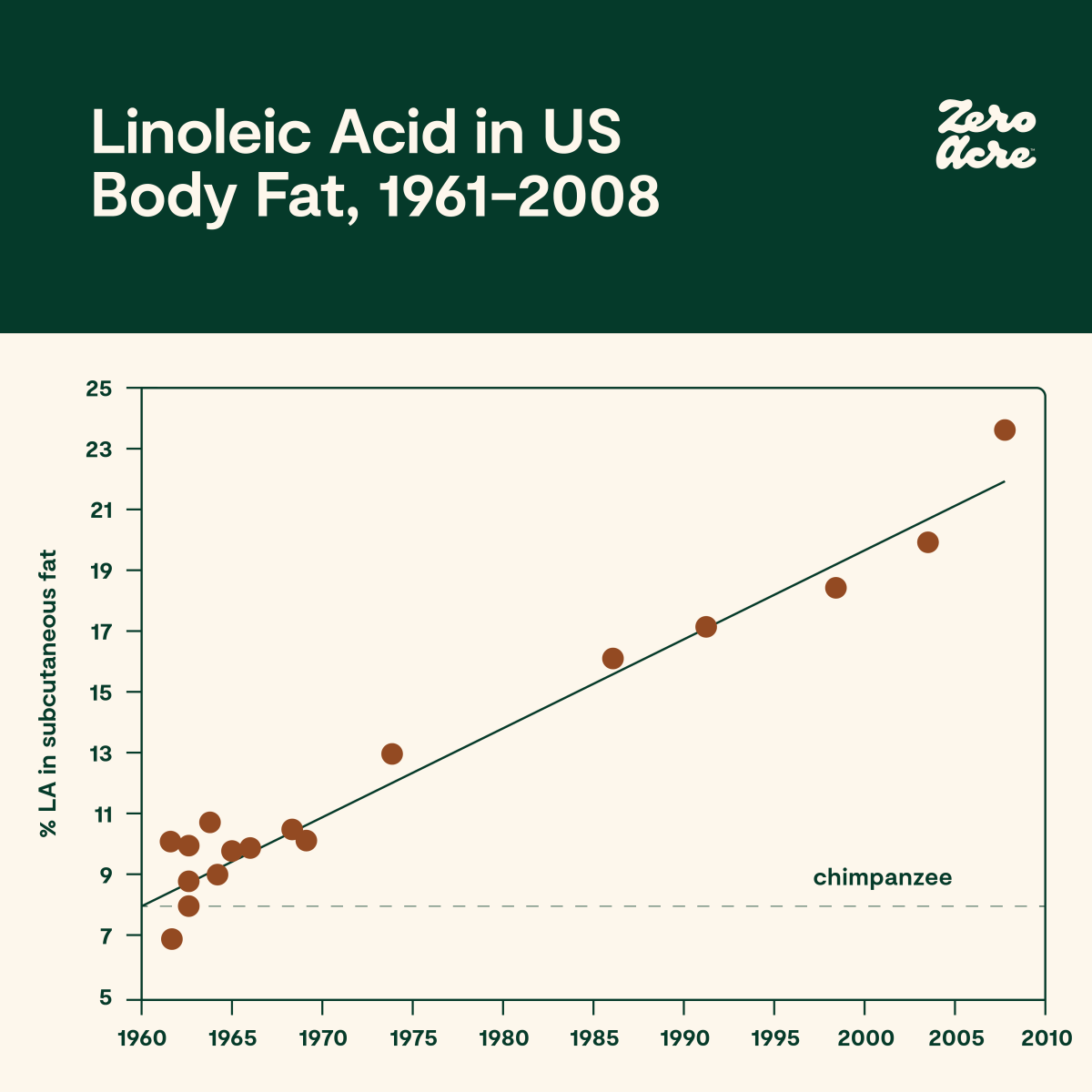
Inflammation
While you need dietary omega-6 fatty acids in extremely small amounts, soaring levels of linoleic acid consumption can trigger a cascade of inflammation in the body [*].
Inflammation isn’t inherently bad. In fact, it’s vital for a healthy immune system. But chronic inflammation is cited as a source of many of the diseases we face today, from unwanted weight gain, diabetes, and autoimmune disease to cognitive decline, dementia, and cancer [*,*,*,*,*,*].
And inflammation is just the beginning. The unstable, reactive properties of dietary omega-6 fats create a host of downstream effects, including oxidative stress.
Oxidative Stress
High levels of omega-6 fatty acids can also trigger oxidative stress.
Oxidative stress is the result of oxidation in your body — the process of a molecule losing an electron and being left with an unpaired electron as a result. Unpaired electrons are never a good thing, as their one and only goal is to find a partner to pair up with again.
Molecules with a missing electron are called free radicals, and they will wreak havoc on your body by stealing electrons from other cells, leaving a lot of cellular damage in their wake.
Oxidative stress occurs when there is an imbalance between your body's production of free radicals and the antioxidant compounds needed to combat them.
Antioxidants play a crucial role in taming free radicals because they have an extra electron to give away. Once the free radical pairs with an electron from an antioxidant it no longer causes damage.
But seed oils are highly reactive and more prone to oxidation than other fats. So, the more seed oils you consume, the more free radicals in your body, resulting in more cellular damage.
Once oxidized, omega-6 fats (especially linoleic acid) also produce toxic byproducts that have been linked to several chronic diseases such as Alzheimer's, heart disease, and liver disease [*].
Trans Fats
Another danger of seed oils is the presence of trans fatty acids. Scant amounts of trans fats are found in the natural world, and consuming even moderate levels of trans fats can wreak havoc on cell membranes [*].
When polyunsaturated fats are heated, their double bonds become vulnerable to disturbance. Unlike saturated fats that are protected by hydrogens all around, unsaturated fats can become flipped in their orientation, creating a new structure. And each time an oil is reused for frying, its trans fat content increases [*].
Even without heat, seed oils contain up to 3.6% trans fats, but since that’s less than 0.5 grams per 14-gram serving, the trans fat content can be listed as “0 grams” on the bottle [*].
Harmful Chemical Additives
During the processing of seed oils, harmful chemicals are added to enhance yield and promote the longevity of the product's shelf life.
Specifically, hexane is a commonly used chemical that enhances extraction yield in oils but remains present in small amounts in the finished product [*]. In addition to its use in seed oils, hexane is also used as a solvent in glues, varnishes, and inks and is used as an effective cleaning agent in the printing industry [*].
To promote a longer shelf life for seed oils, many manufacturers add chemical preservatives which are meant to combat oxidative damage. In nature, antioxidants defend against oxidative damage. In factories, industrial chemicals (like TBHQ, BHT, BHA, etc.) attempt to mimic natural antioxidants. But these chemicals have been classified as carcinogens and are subject to severe restrictions as additives in Europe [*].
Health Issues Associated With Seed Oils
With the combination of inflammation, oxidation, cell membrane disturbance, and chemical additives, it should come as no surprise that seed oils are associated with a handful of health issues. Below are some of the most well-researched health concerns related to seed oils.
Autoimmune Disease
Autoimmune disease happens when your immune system mistakenly attacks healthy cells. To date, around 24 million people in the U.S. are affected by some sort of autoimmune condition, with evidence showing that autoimmunity is still on the rise [*,*].
Among the key indicators of autoimmune disease is an uncontrolled inflammatory response [*].
Research suggests that vegetable (seed) oils may contribute to autoimmunity by impacting antioxidant systems and inflammatory pathways. When you consume oils rich in omega-6, it increases the formation of free radicals (which cause oxidative stress) due to the impact of Omega-6 on antioxidant enzymes. This inhibition of antioxidant activity is thought to result in impaired immune function, which further drives the inflammatory response [*].
Heart Disease
Research shows that seed oils rich in linoleic acid can promote several factors that set the stage for cardiovascular disease — including increased oxidative stress, higher levels of oxidized LDL, and chronic inflammation [*].
What's more, studies show that a high level of linoleic acid in both fat tissue and blood platelets is positively associated with coronary artery disease (CAD)[*]. On the other hand, high levels of omega-3 fatty acids in tissues and platelets are inversely correlated with CAD [*].
This may explain why heart attack patients tend to have higher levels of linoleic acid in their arteries, with levels of linoleic acid increasing as the severity of the heart attack increases.[*]. It’s also worth noting that there are higher rates of death from heart disease in regions with higher omega-6 consumption [*].

Alzheimer's Disease
Evidence suggests that fatty acid levels are linked to cognitive health, with higher levels of omega-6 fats leading to reductions in cognition.
As mentioned, dietary fat impacts the composition of your cells. Zooming out, this also means that fat intake will directly impact the composition of your tissues and organs. And while all of your organs rely on healthy fat for optimal function, your brain is 60% fat — which means that your dietary fat choices play a vital role in its health and maintenance.
Animal studies show that too many omega-6 fats can affect brain composition and set the stage for Alzheimer's disease pathology and behavior. And human trials show a positive correlation between the omega-6/omega-3 ratio and the incidence of dementia [*].
In an animal study, mice fed soybean oil showed profound changes in the brain's hypothalamus, an area where several critical processes take place. As a result of these changes, the mice were more likely to be affected by neurological disease, anxiety, depression, and autism [*].
Obesity
There are several possible causes for the rapid rise in obesity across the globe over the last few decades. But seed oils are a significant (and often overlooked) cause of unwanted fat gain that you can easily remove from your diet.
One mechanism that may account for the link between increased vegetable oil consumption and obesity is what happens when vegetable oil's primary fat, linoleic acid, breaks down in the body.
Linoleic acid, it turns out, breaks down into various molecules such as OXLAMs (oxidized linoleic acid metabolites) and aldehydes. Aldehydes are also found in cigarette smoke and include acetaldehyde, acrolein, and formaldehyde.
But one of the most prolific metabolites of linoleic acid in the body (and the most toxic of all the aldehydes) is 4-Hydroxynonenal, also called 4-HNE or HNE for short [*].
Toxins like HNE alter our metabolic cycle and damage fat cells and may result in fat gain as an unfortunate side effect of excessive linoleic acid consumption, to which our body is not adapted [*,*].
And HNE is derived from only one source, the breakdown of omega-6 fats, primarily linoleic acid [*,*].
HNE production is just one way that seed oil consumption may trigger a cascade of fat-inducing, inflammatory compounds. For a much more in-depth explanation of how seed oils contribute to obesity, check out our White Paper on the subject.
Diabetes
In a systematic literature review, investigators examined the potential relationship between the omega-6 fatty acid content of fat tissue and diabetes. They found that as America's linoleic acid tissue content continues to rise, it parallels the growing prevalence of diabetes and obesity [*].
This makes sense, as the use of vegetable oils has steadily increased over the last 100 years, and perhaps uncoincidentally, so too have several metabolic diseases.
While the exact mechanism behind the relationship between linoleic acid and diabetes is still unclear, researchers believe a genetic component drives insulin resistance in those with high dietary omega-6 [*].
Some research suggests that omega-6 fats increase insulin secretion while also reducing its breakdown, leading to impaired insulin action and eventually insulin resistance [*].
Macular Degeneration
Age-related macular degeneration (AMD) occurs when the eye's macula becomes damaged and central vision becomes blurred [*]. AMD is the leading cause of blindness globally and one of the only conditions where it's widely recognized that excess omega-6 fatty acids are the culprit [*,*,*,*,*].
Your eyes, much like your brain, are made primarily of fatty acids. As you learned earlier, omega-6 fats are vulnerable to oxidative damage due to their structure. By far, the greatest threat to eye health is UV rays from the sun. If your eyes are composed primarily of omega-6 fats, it may make them more vulnerable to oxidative stress via UV exposure [*].
Top Seed Oils to Avoid
Ideally, you would limit your seed oil intake as much as possible. However, our food supply is now riddled with these oils, and it may be challenging to cut them all out. Especially considering that most restaurants, from fast food to five-star establishments, use them in almost every dish.
With that in mind, here is a list of the worst offenders when it comes to high-linoleic seed oils.
Grapeseed oil (between 66.0% and 75.3%) [*]
Safflower oil (70% linoleic acid) [*]
Sunflower oil (66% linoleic acid) [*]
Soybean oil (55% linoleic acid) [*]
Cottonseed oil (53% linoleic acid) [*]
Corn oil (60% linoleic acid) [*]
Rice bran oil (30% linoleic acid) [*]
Peanut oil (25-29% linoleic acid) [*]
Canola oil (17-21% linoleic acid) [*]
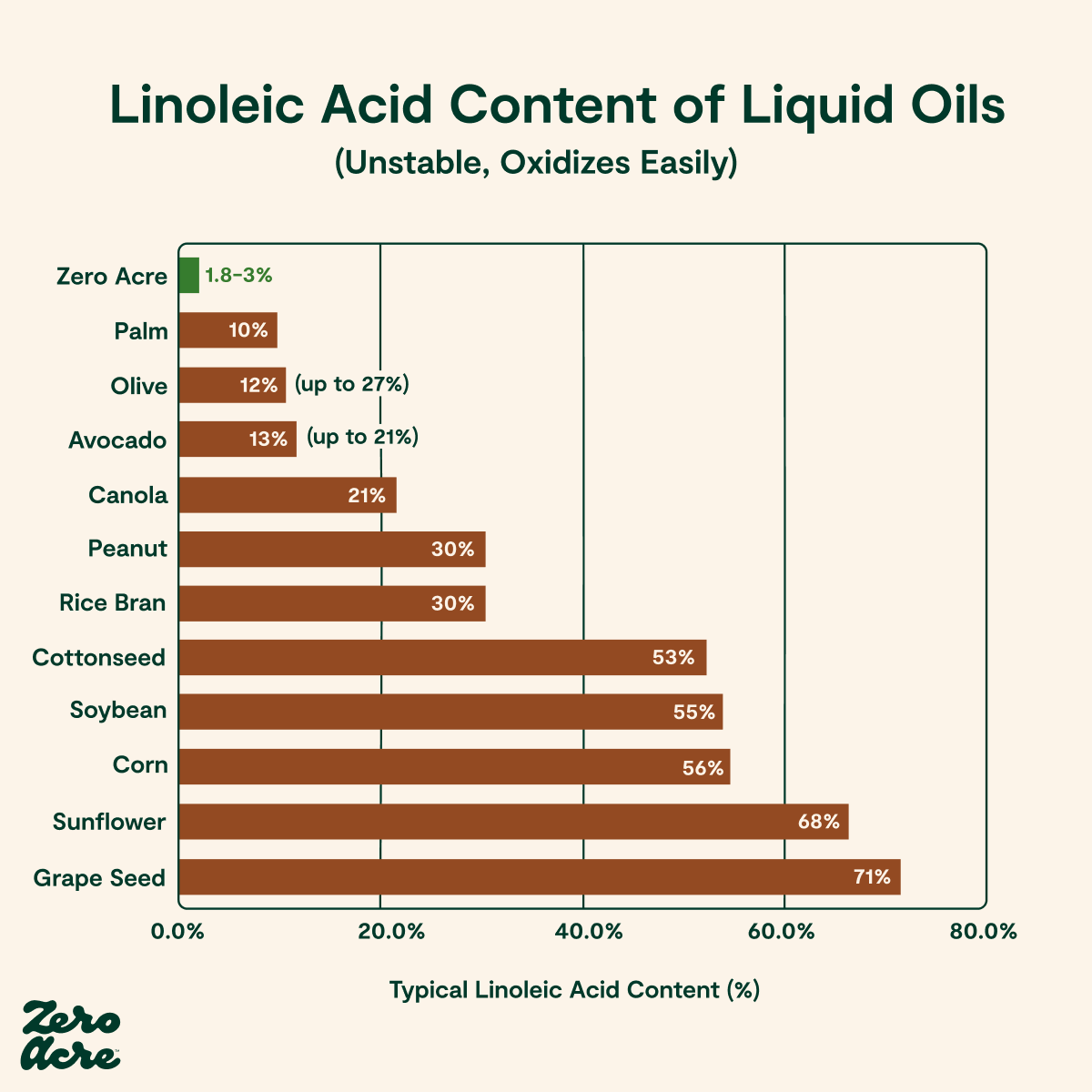
What to Use Instead
Vegetable oils like avocado, coconut, and olive oil are known for their slightly lower linoleic acid content and decent smoke points. However, each of these comes with compromises.
Avocado Oil
Extra virgin avocado oil boasts a high smoke point between 428-482°F, making it a great choice for high-heat cooking [*]. And it's high in monounsaturated fats and vitamin E [*] compared to many other industrial seed oils.
However, on average, it still contains 13.4% inflammatory linoleic acid [*]. And avocado farming has significant negative environmental effects due to land use, water consumption, and biodiversity loss [*,*,*].
Coconut Oil
Coconut oil is low in polyunsaturated fats (PUFAs), containing only 2% linoleic acid [*], and fairly heat stable with a smoke point of about 375°F [*]. However, its strong coconut taste can make all of your food taste the same over time. And, like many other oil crops, coconut oil production has a significant environmental impact and is linked to the loss of tropical biodiversity [*].
Olive Oil
Olive oil is known for its high monounsaturated fat content and relatively high smoke point. It's also resistant to damaging oxidation during frying compared to most vegetable oils [*].
However, olive oil commonly contains up to 21% omega-6 linoleic acid, with levels as high as 27% documented in research [*]. Additionally, up to 80% of imported olive oil is counterfeit or adulterated with other, cheaper vegetable oils [*]. It's also one of the greediest cooking oils in terms of land use, water consumption, and emissions [*,*].
Zero Acre oil
Zero Acre oil, on the other hand, is a cooking oil without many compromises. High in heart-healthy and heat-stable monounsaturated fat, Zero Acre oil has a sky-high smoke point of 485°F and a clean neutral taste. It also has one of the lowest linoleic acid levels on the market, less than 3%.
Unlike coconut oil or palm oil, you can use it for everything from salad dressings (that won't clump in the fridge) to sauteing and deep frying.
Made by fermentation, Zero Acre oil uses 87% less land than canola oil, emits 86% less CO2 than soybean oil, and requires 99% less water than olive oil, making it the natural choice when it comes to sustainability.
The Takeaway
With something as pervasive as seed oils, it can be easy to overlook the harm and assume they must be safe if they're included in so many foods and used so freely.
Unfortunately, that's not always the case — certainly not when it comes to oils rich in linoleic acid.
If it feels overwhelming to try to avoid all seed oils at once, begin by just noticing what types of fats you consume on a daily basis. Check your favorite packaged snacks, and don’t be shy about asking restaurants what kinds of oils they use in dressings, sauces, and deep fryers. Until there are better options in restaurants, consider cooking more at home with fats like low-linoleic acid Zero Acre oil.
It's not about perfection, but with every step you take to move away from highly processed seed oils, your cells will thank you.

Are Seed Oils Toxic? The Latest Research Suggests Yes
Seed oils never underwent safety testing for premarket approval. Here, we examine the disturbing toxicity and safety data that have come to light recently.

Why Are Fried Foods Bad for You? (The Real Reason)
Restaurants reuse cooking oil hundreds of times, creating harmful compounds like acrylamides, toxic aldehydes, hydroxylinoleate, free radicals, and trans fats.

